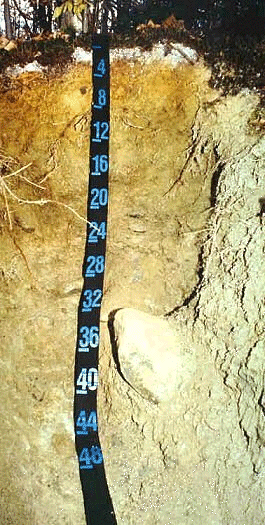
Adopted by the Legislature of 1999 as the state soil. Chesuncook soil is a soil type that was first identified in Maine and is one of the most widely distributed soil types in Maine. The soil series name comes from the Native American word for converging bodies of water. A lake written about in Henry David Thoreau's "The Maine Woods" also shares the name.
Soil is important to Maine's natural resource base. The prosperity of vast forest and wilderness areas depends upon the quality of the soil. Soils are complex "living" systems that provide nutrients to plants and house many organisms. An area's soil type determines the kinds of plants that develop there. The plant life present in turn determines the kinds of animals that make a home in that area. The Maine landscape is reflected in its soil. Sandy beaches contain soil that is nearly all mineral, while farmer's fields contain soil that is almost all organic.
The Chesuncook soils formed in dense glacial till derived mainly from slate and are made up of deep, well-drained soils from hills, mountains, and ridges. The soils scientific name is coarse-loamy, mixed, frigid Aquic Haplorthods. Currently, the soil is monitored by the Natural Resource Conservation Service of Maine, which maintains the taxonomic criteria.